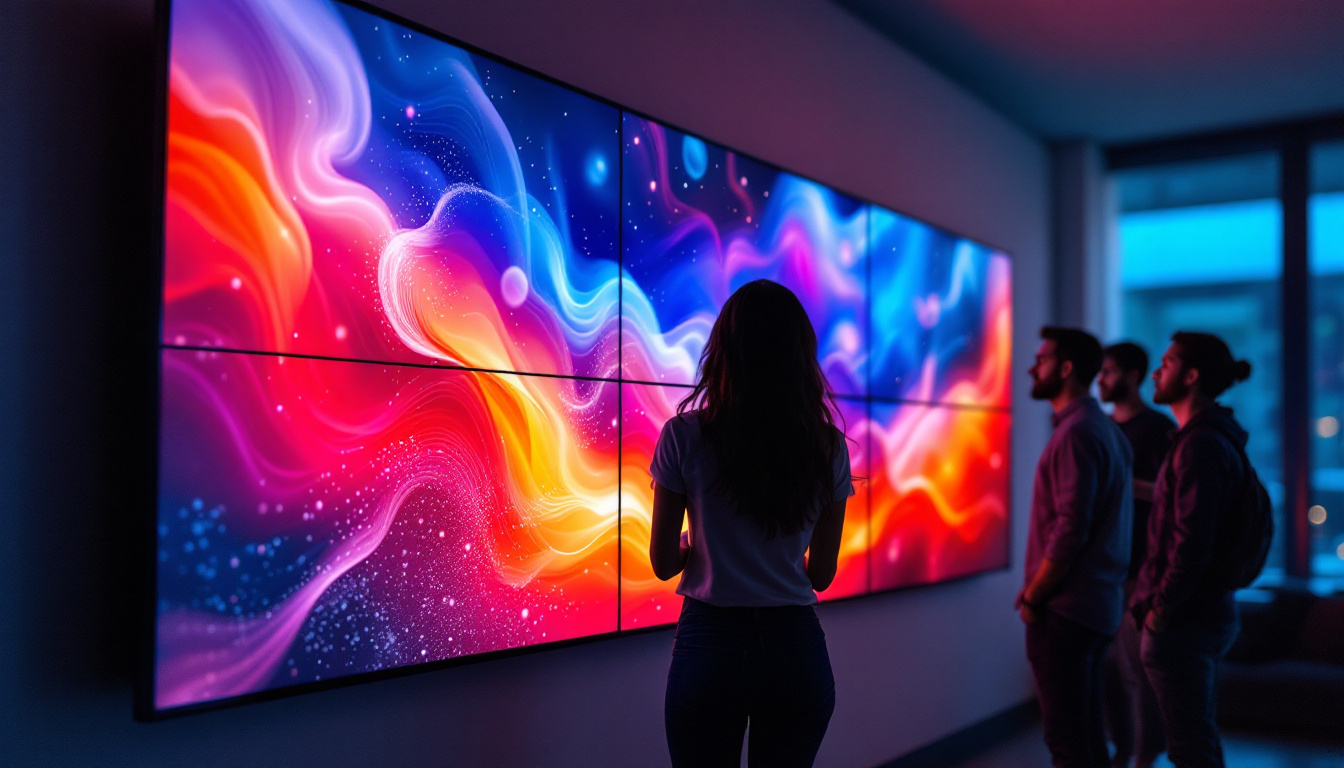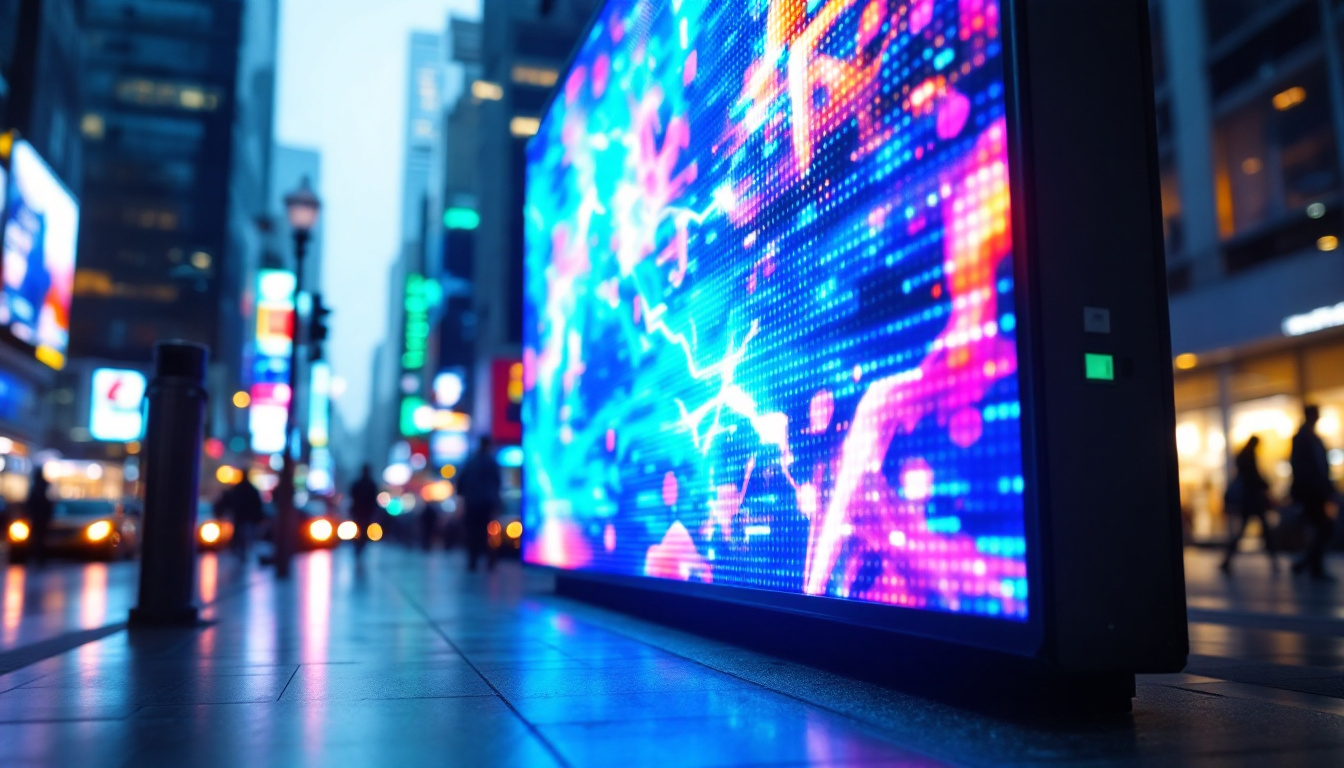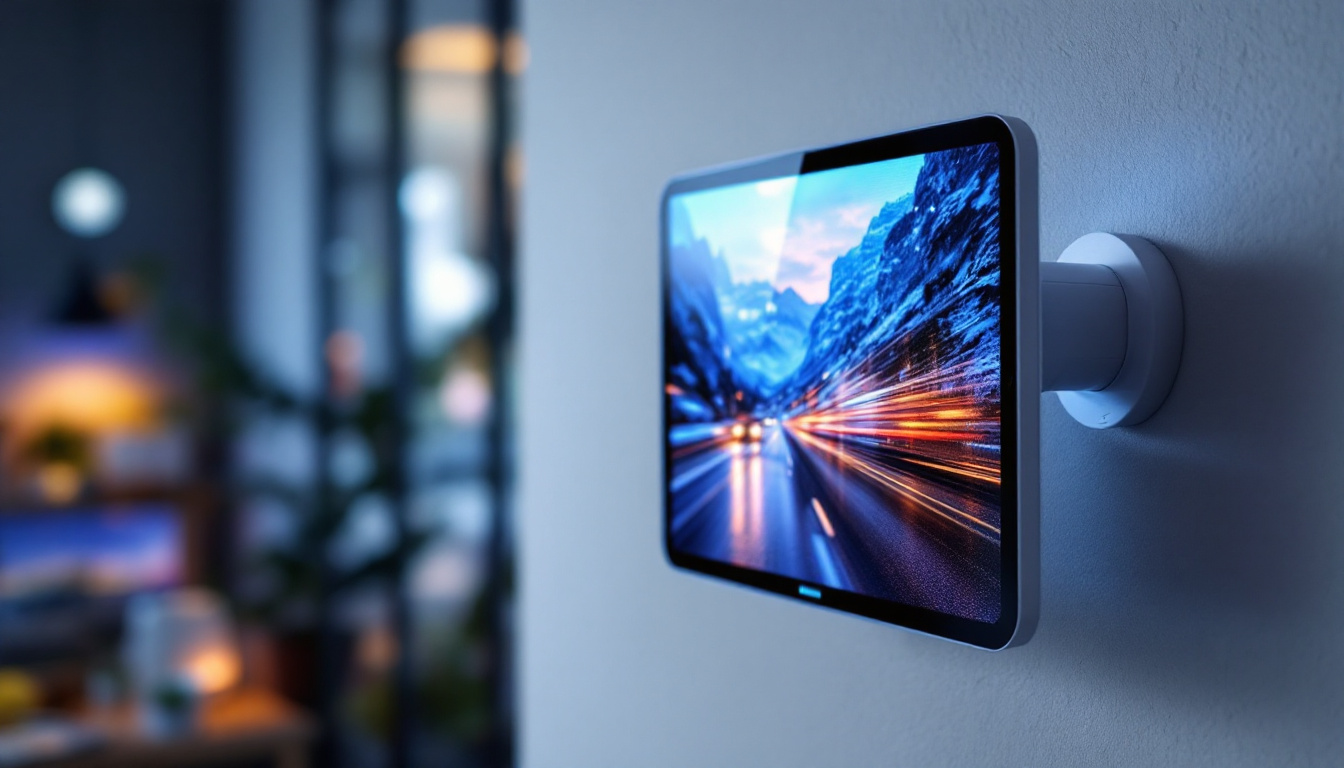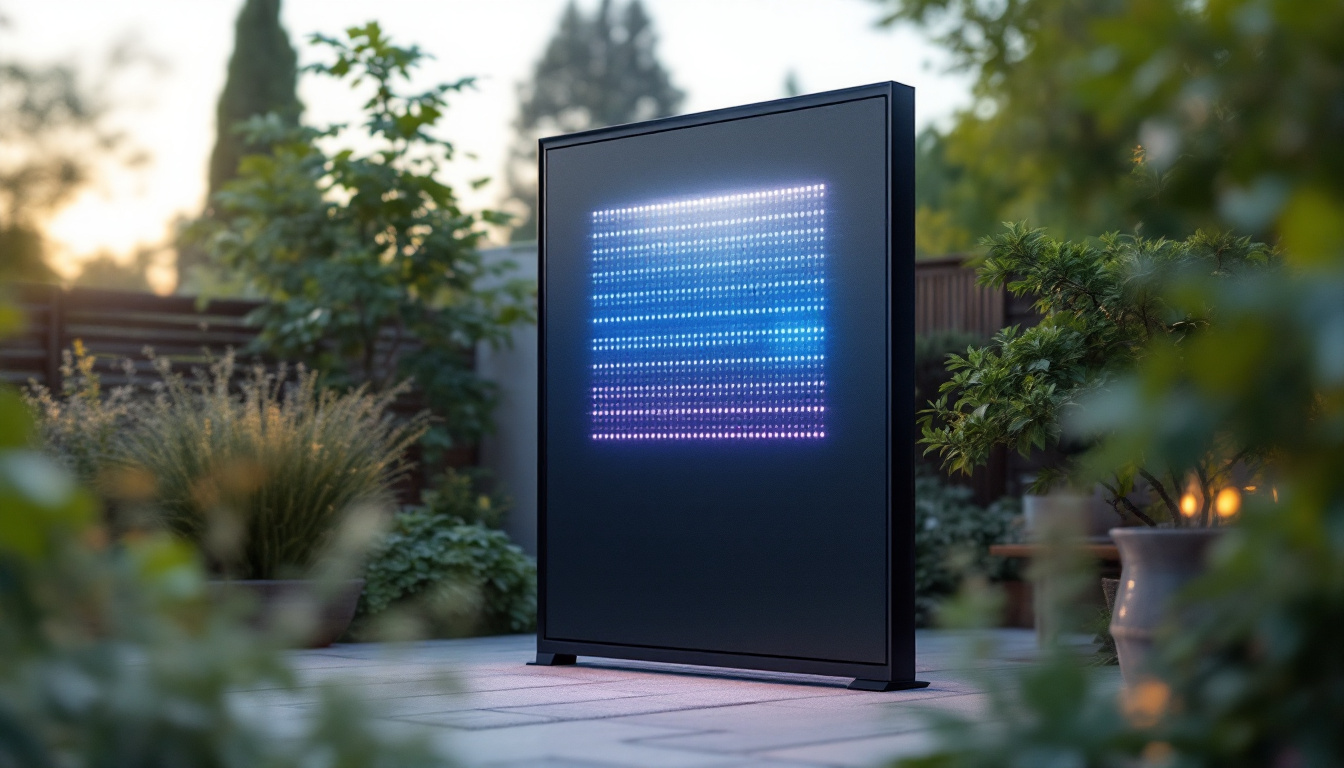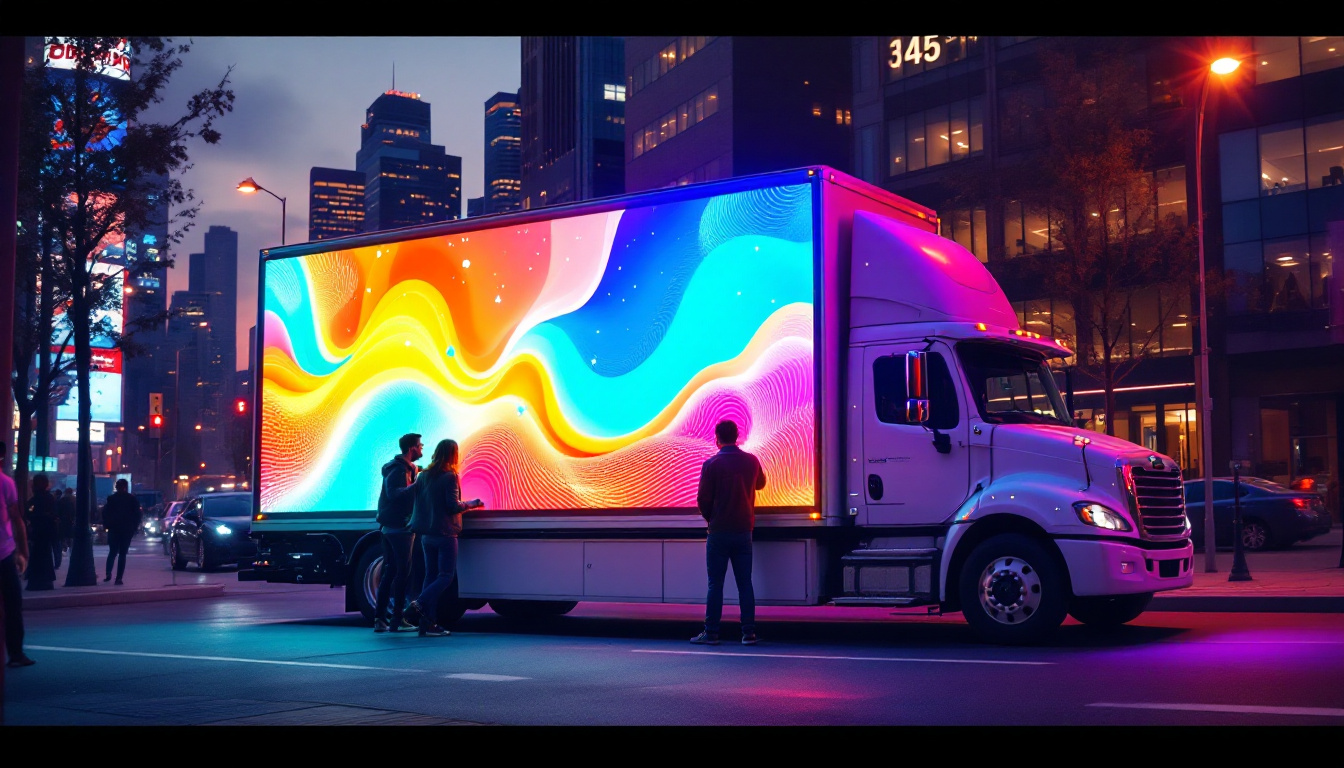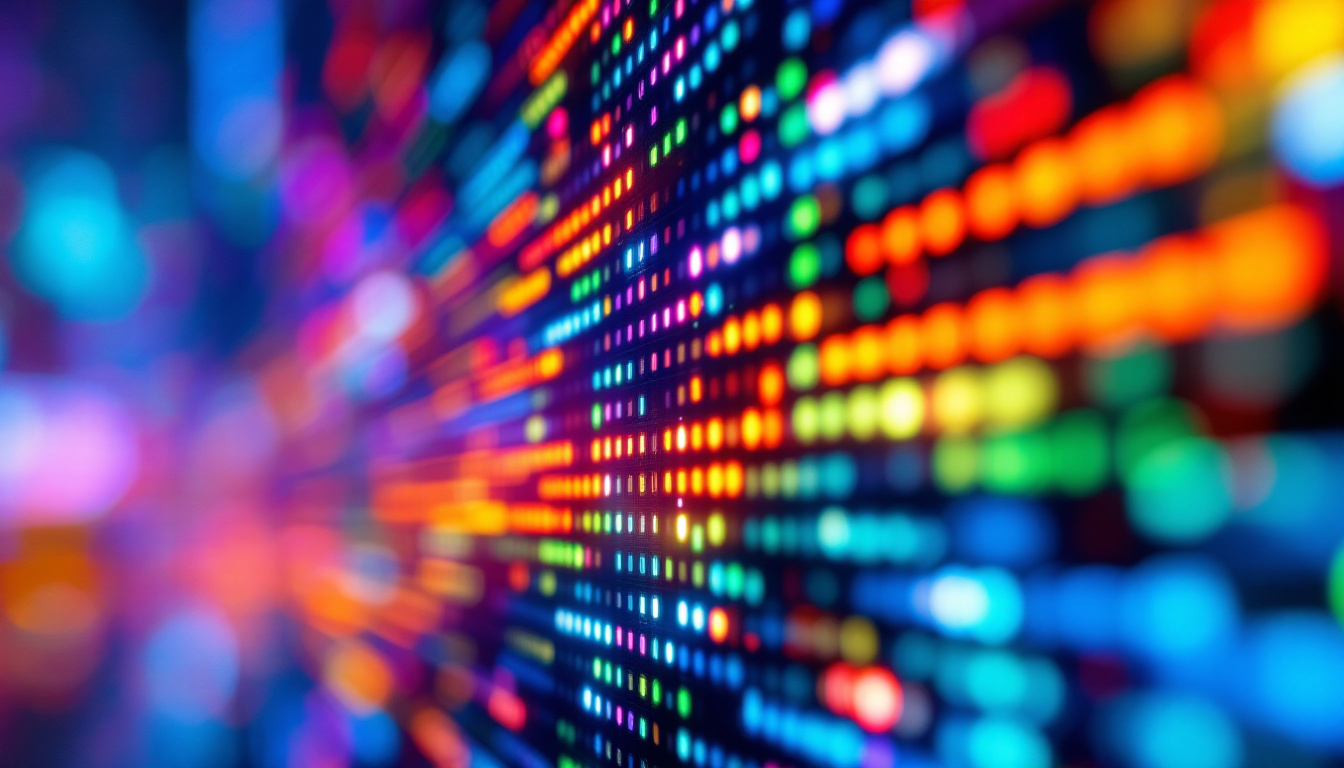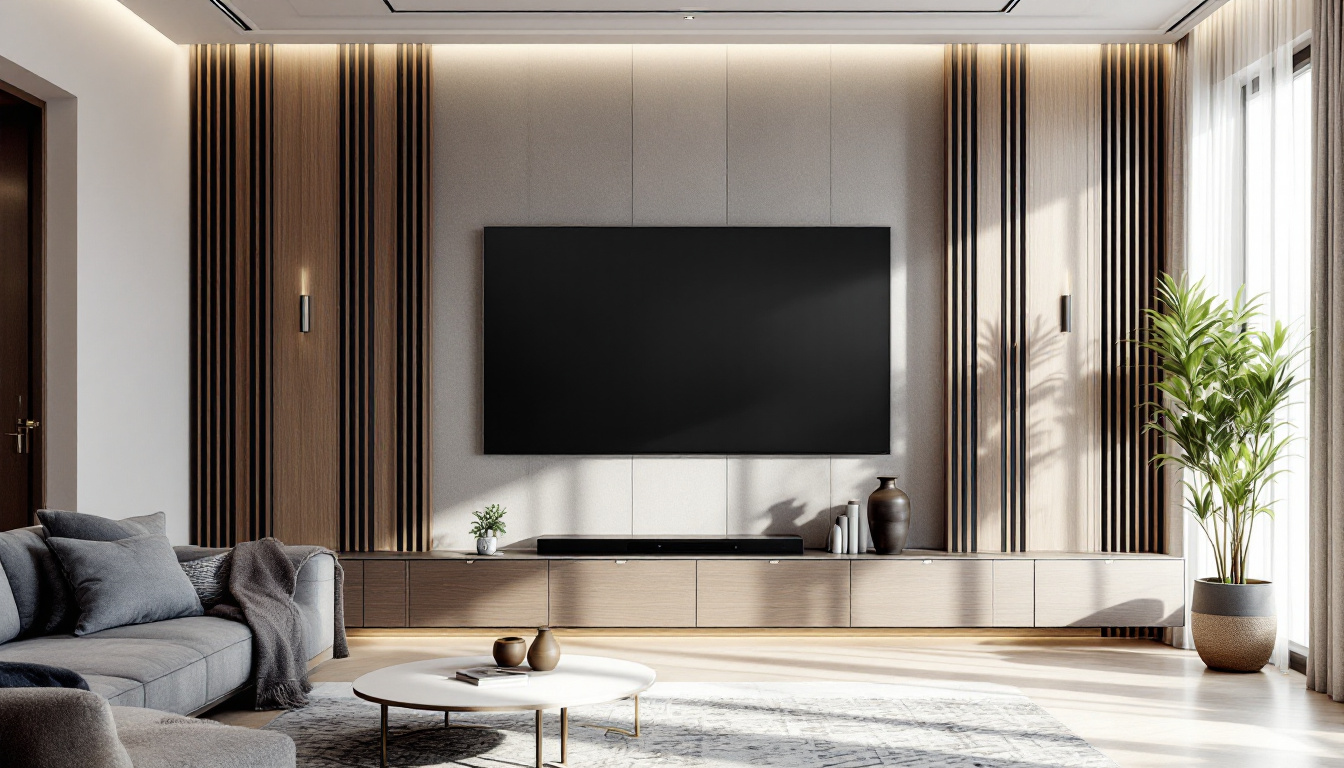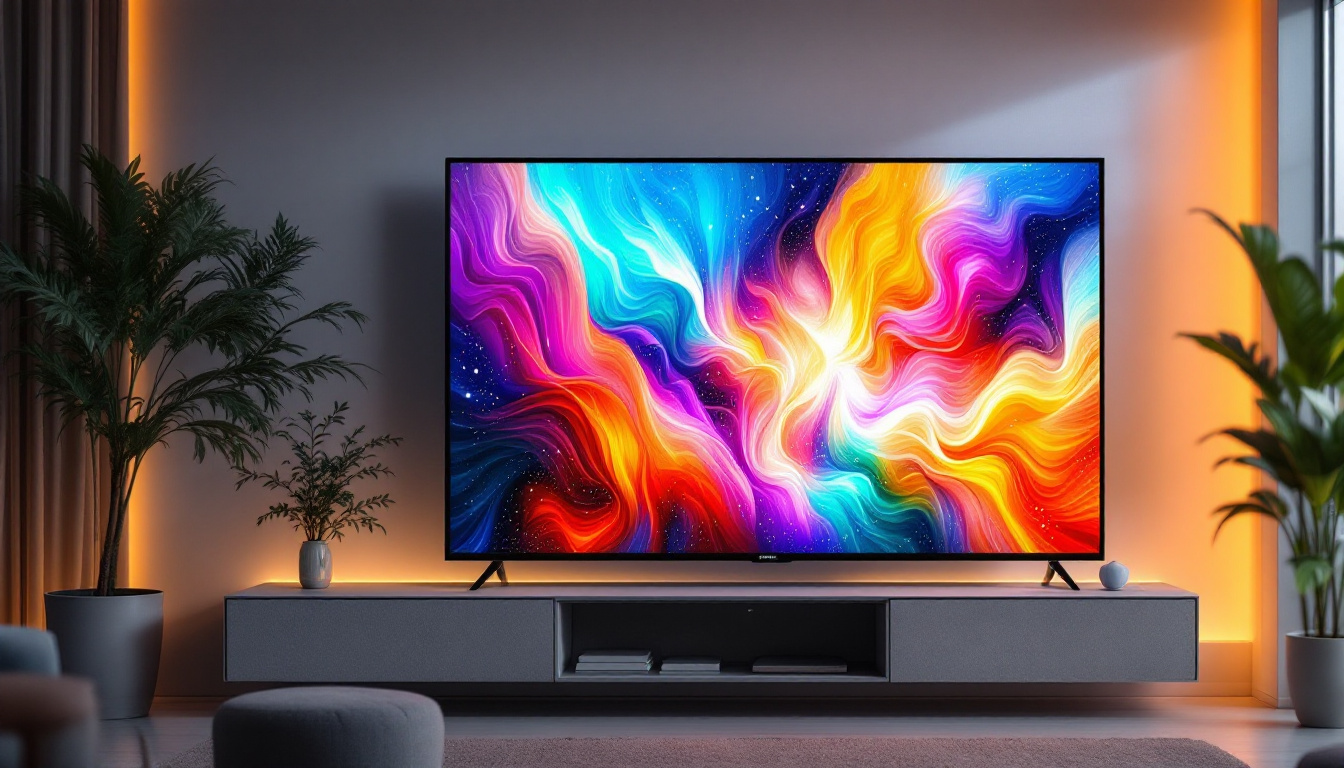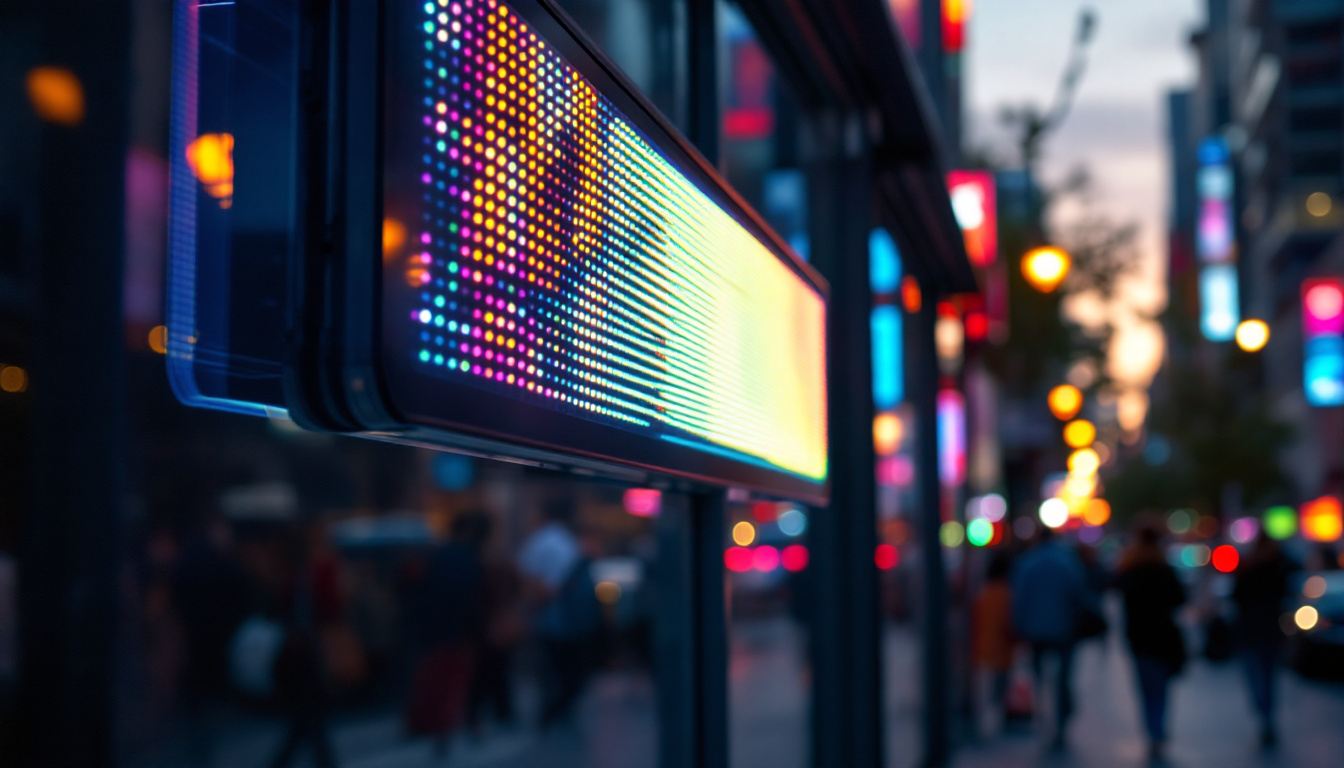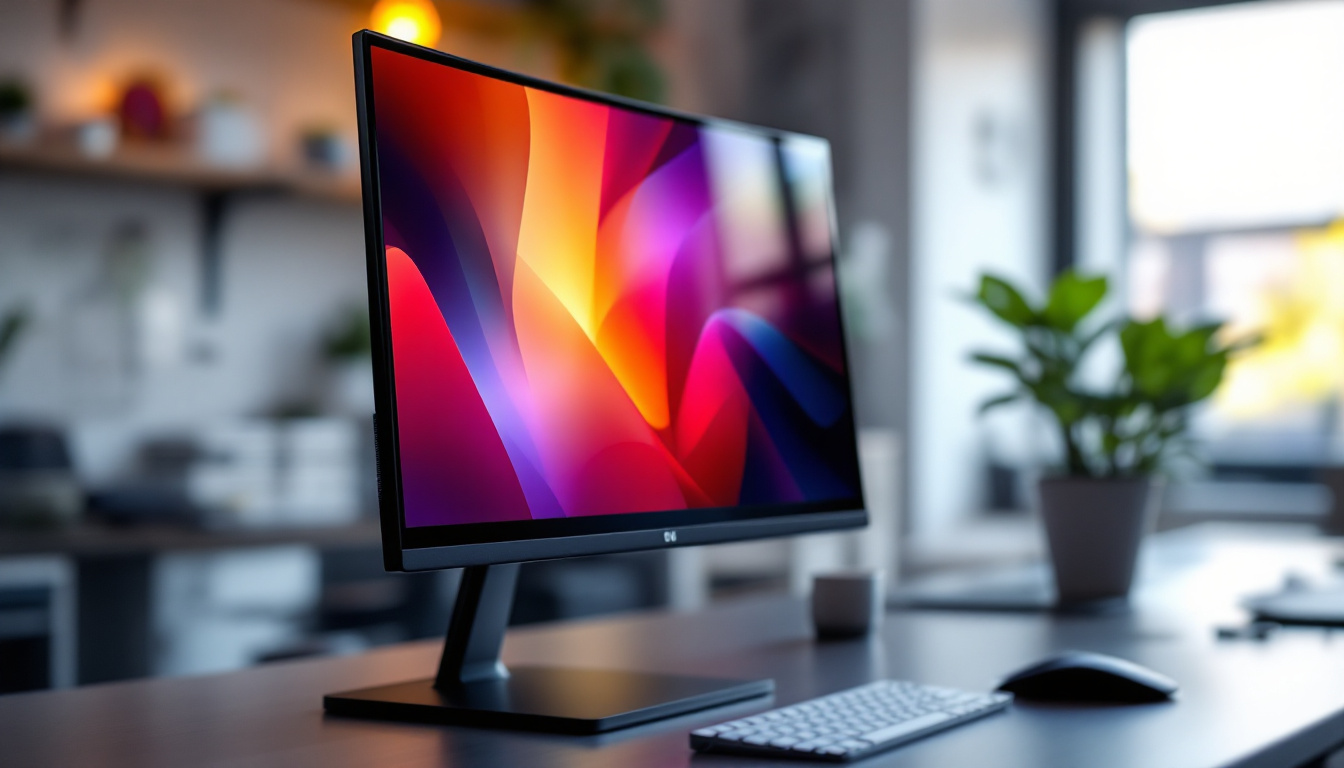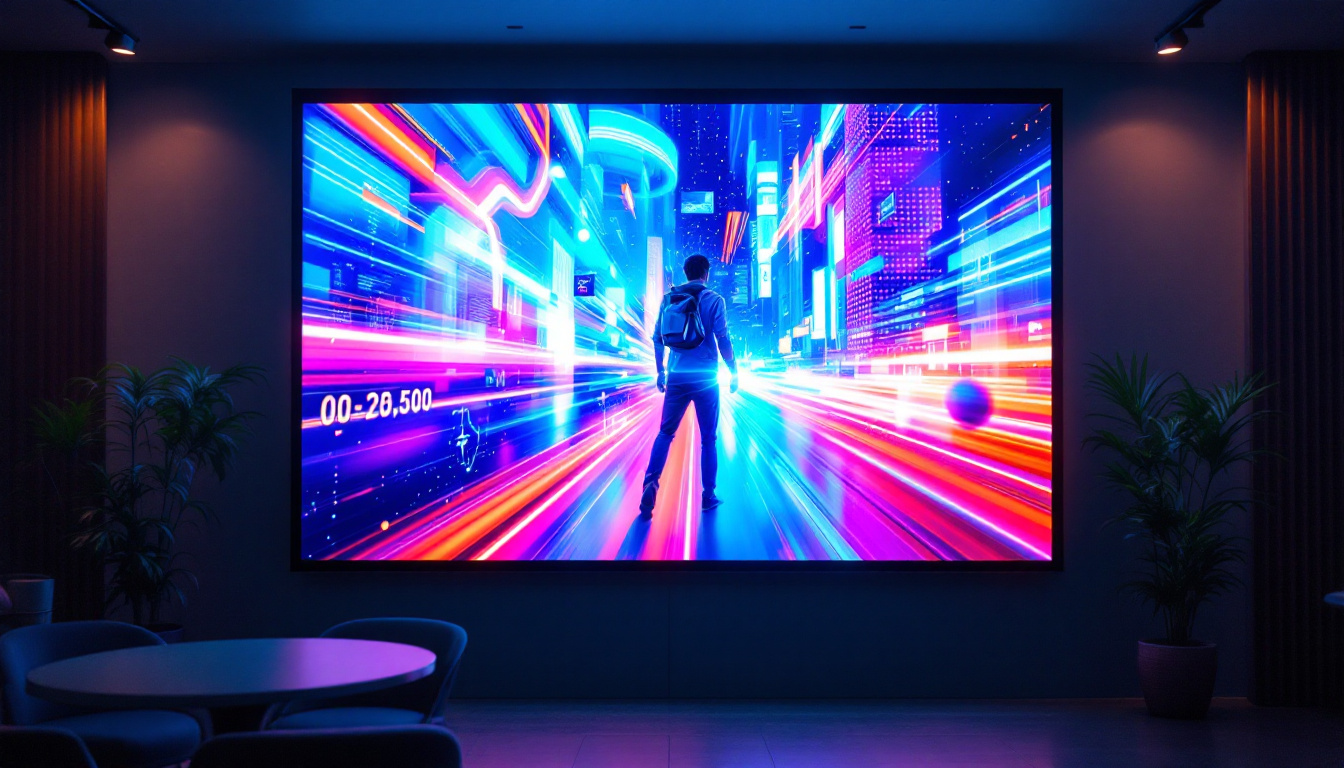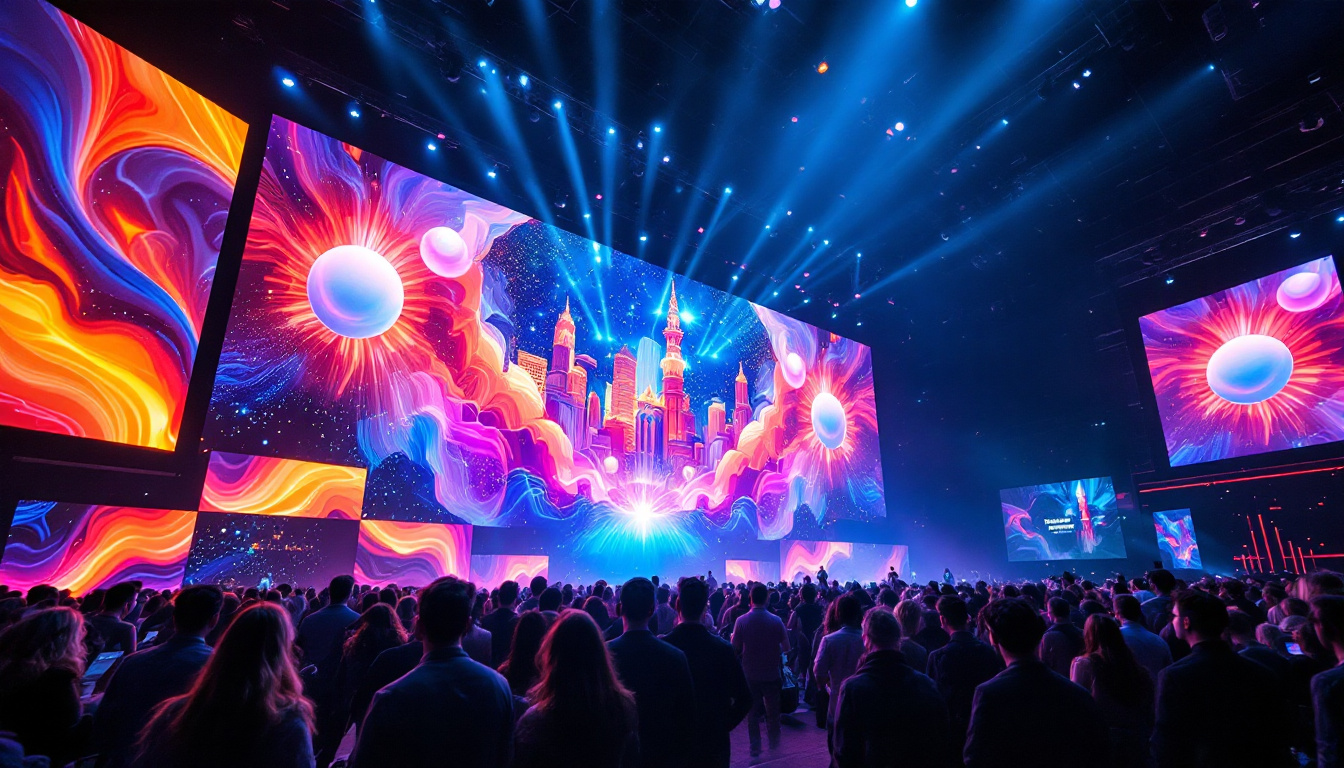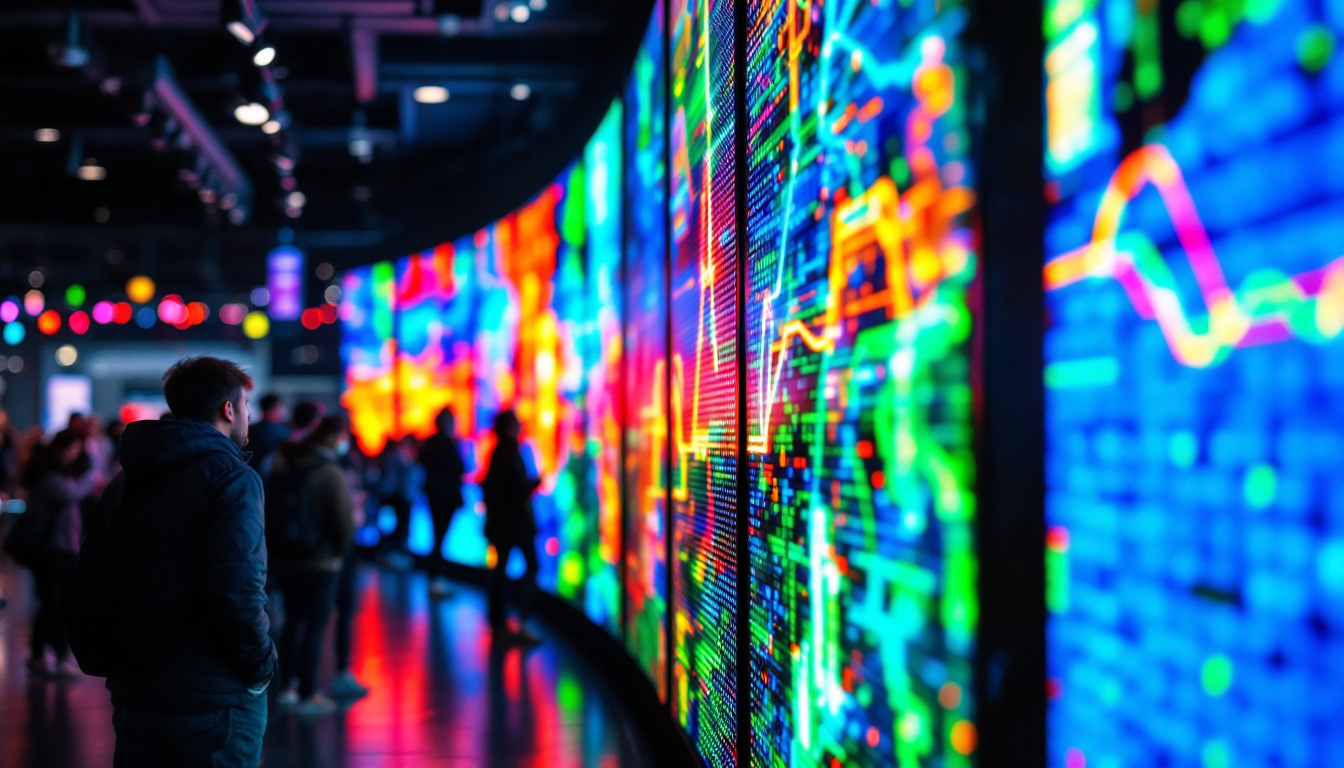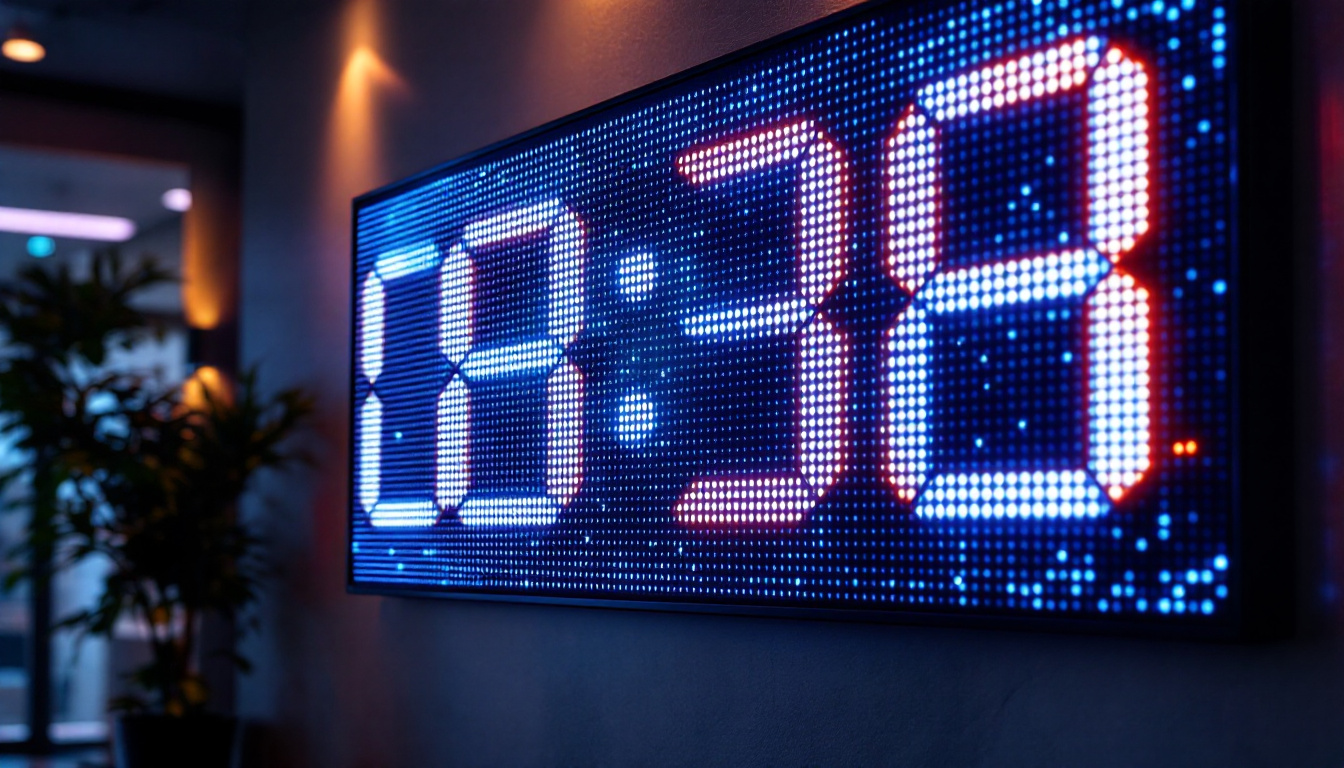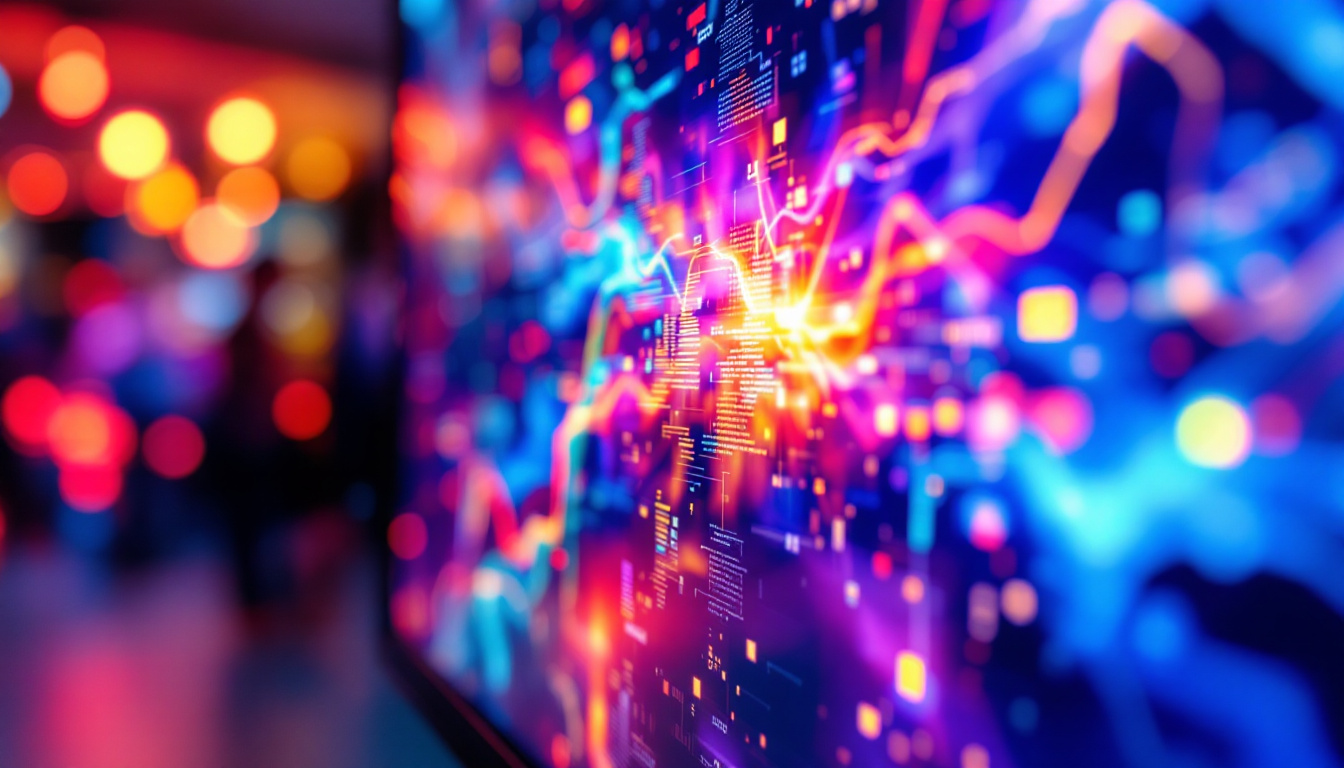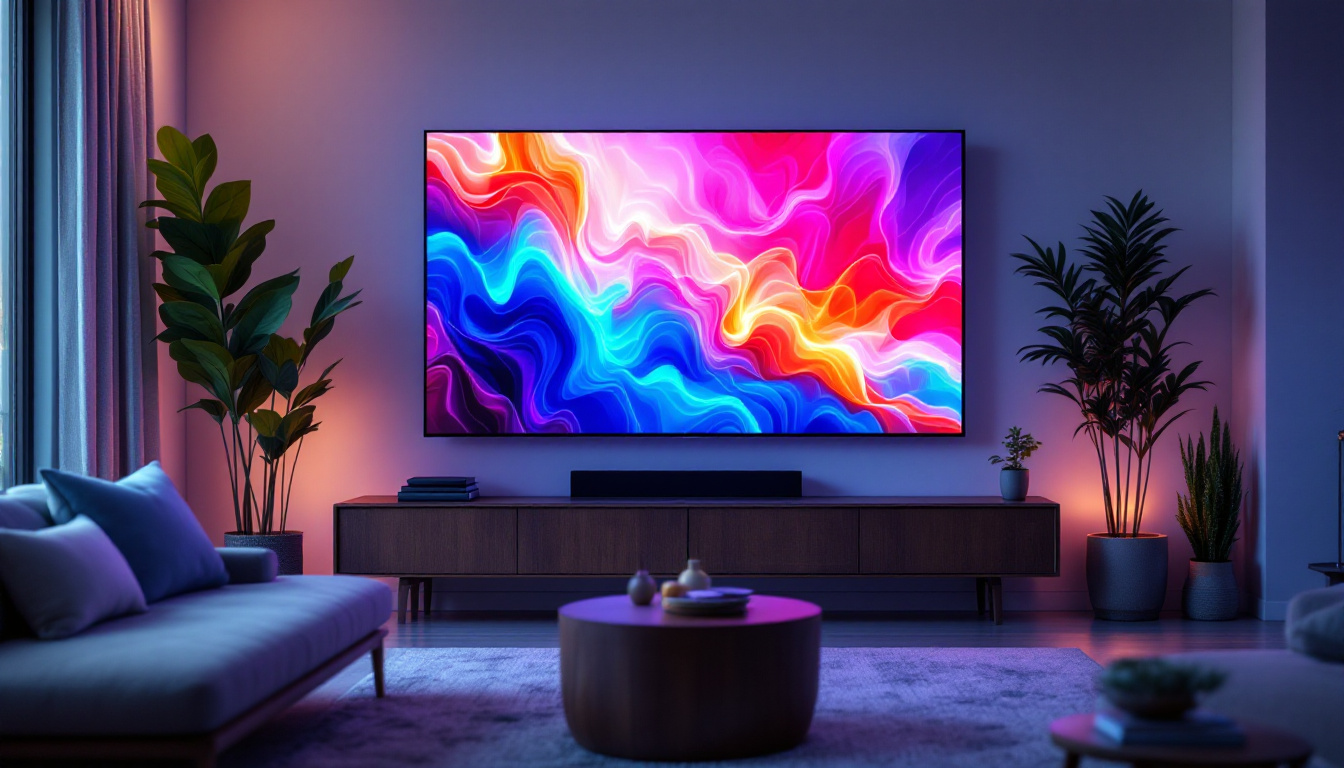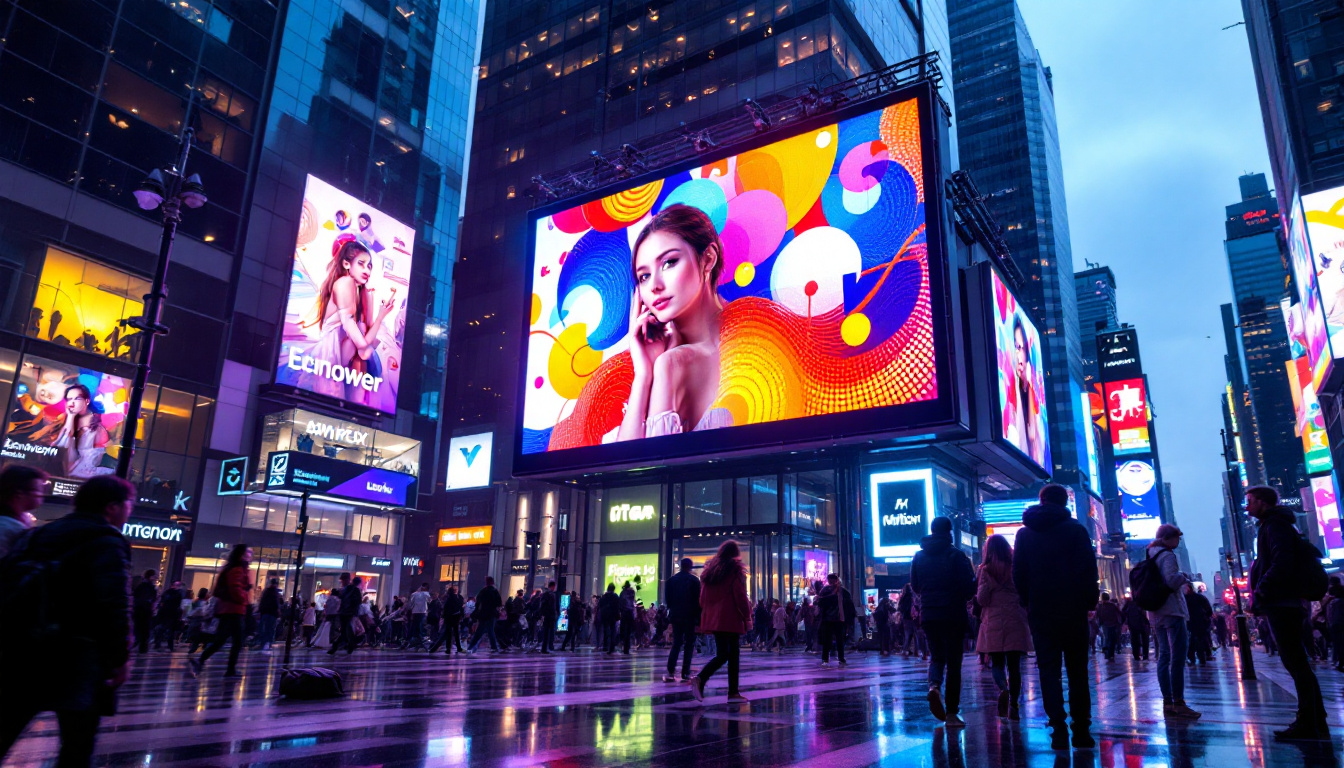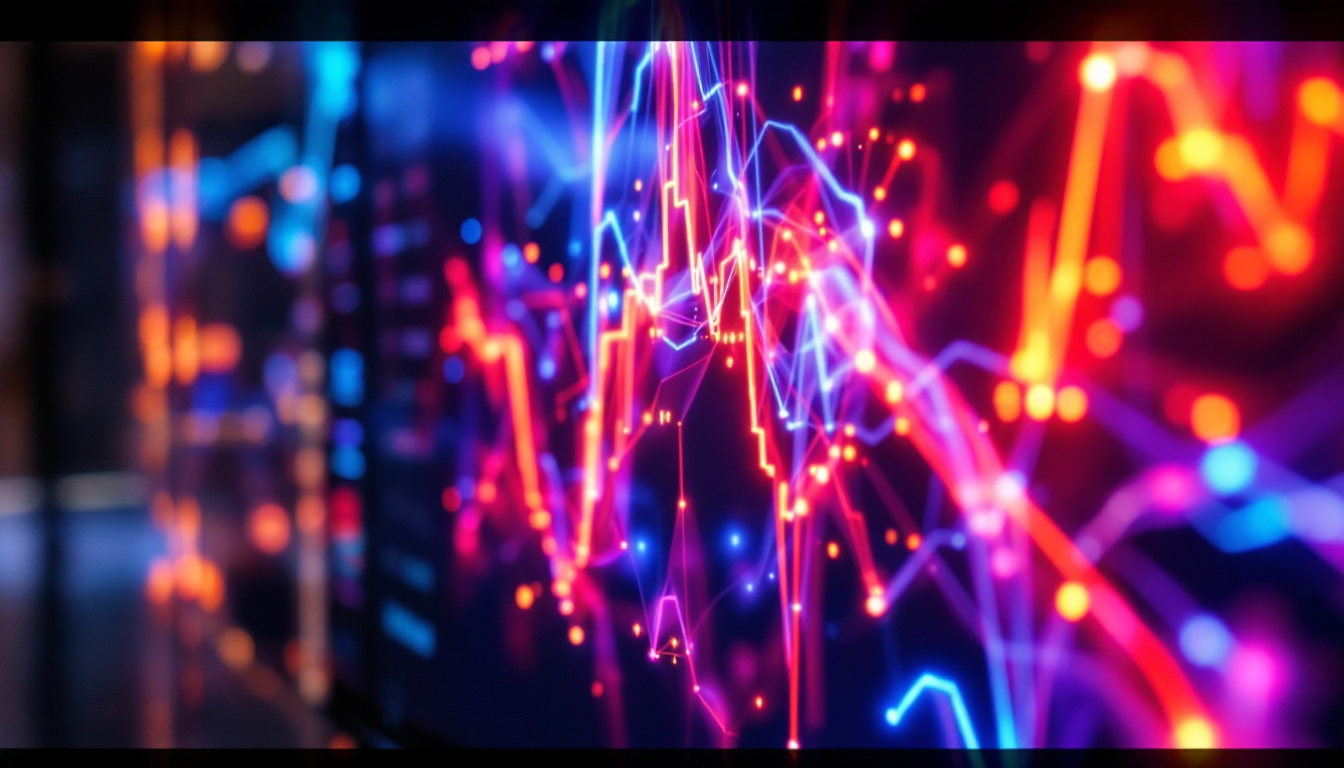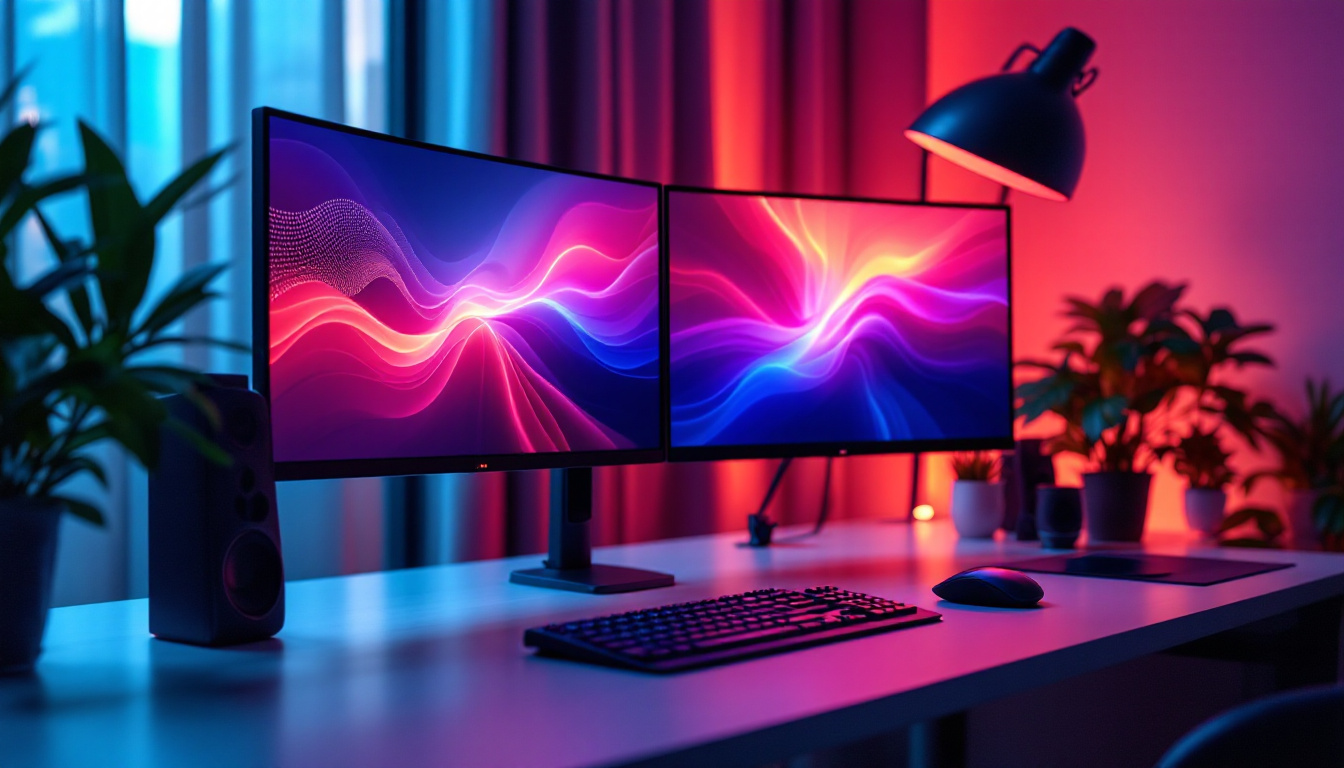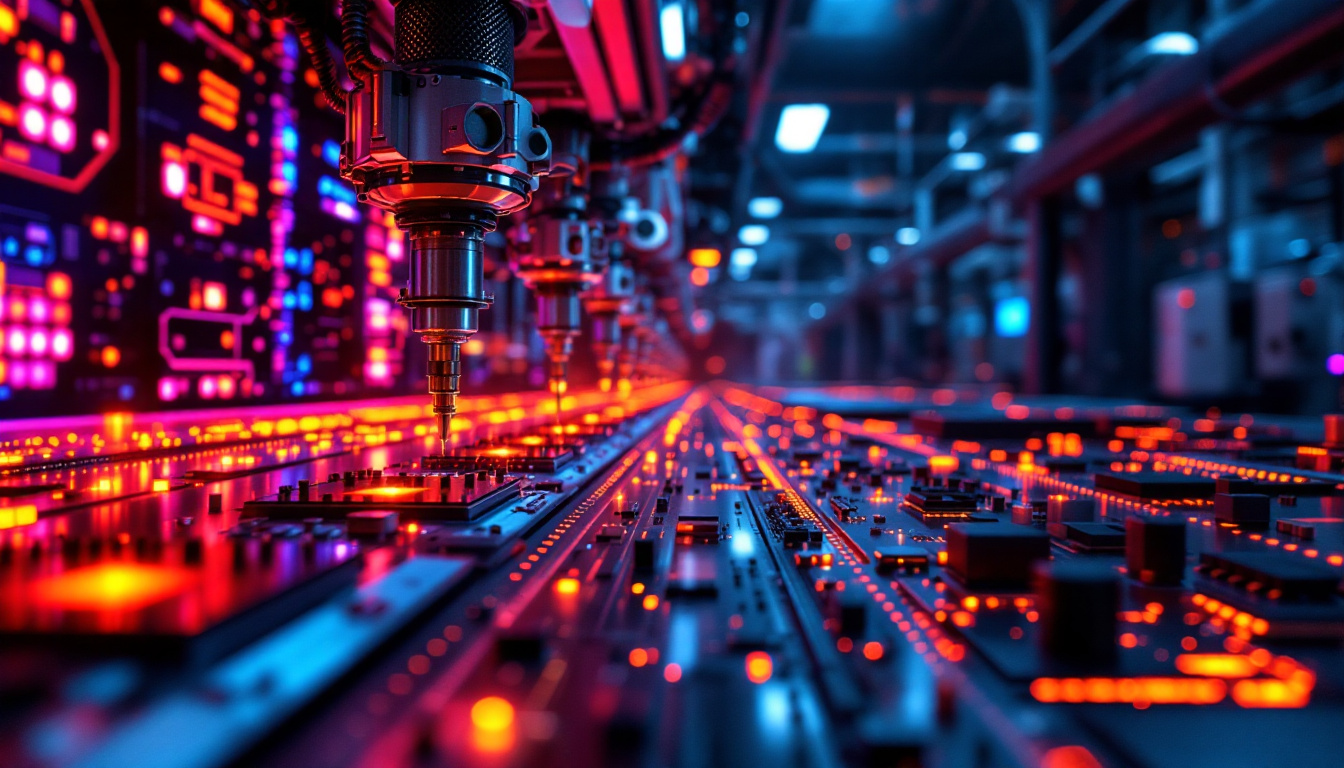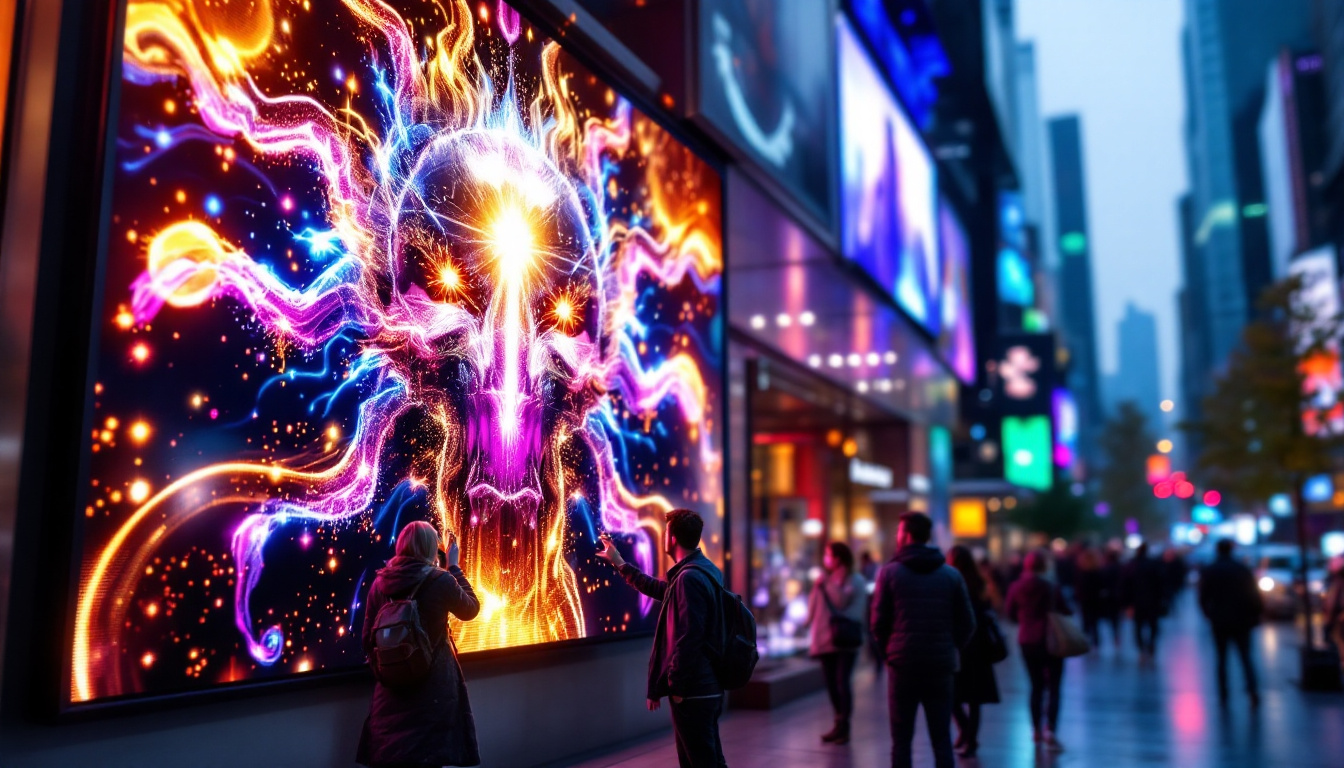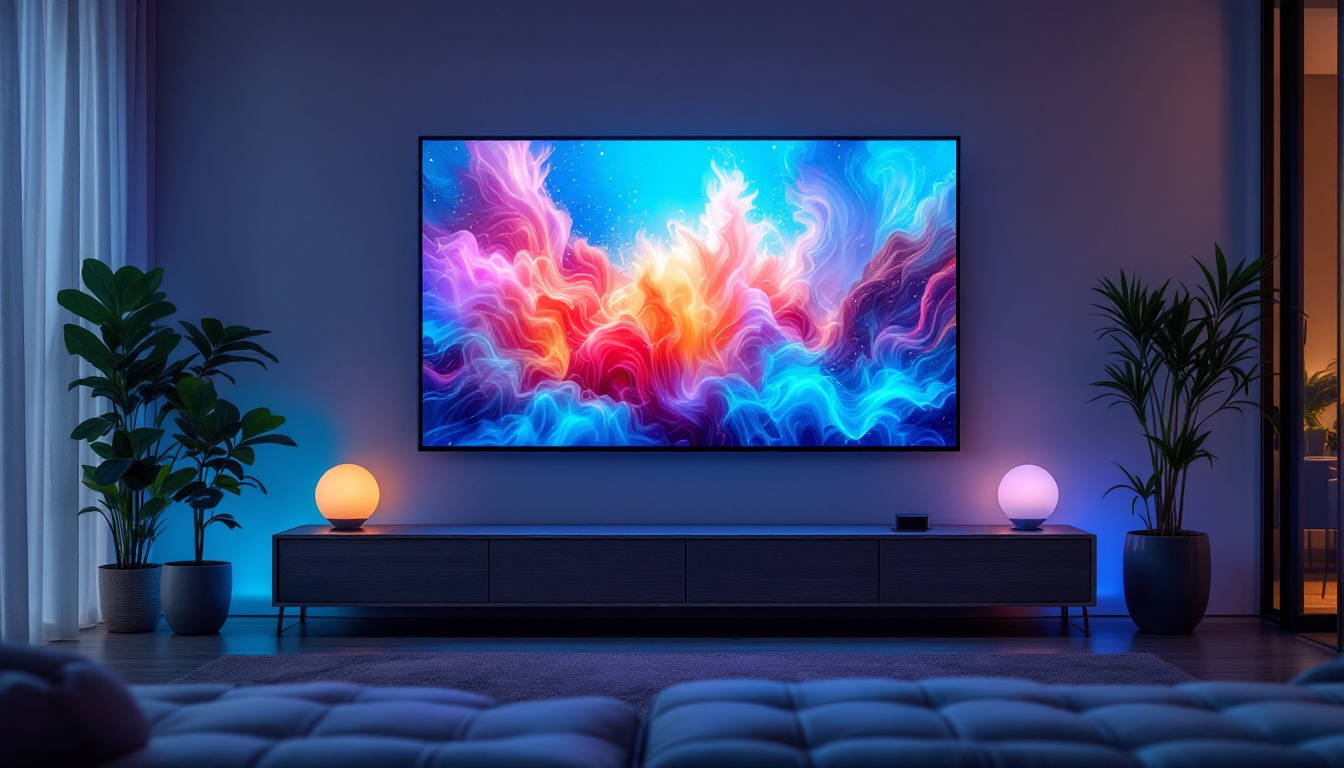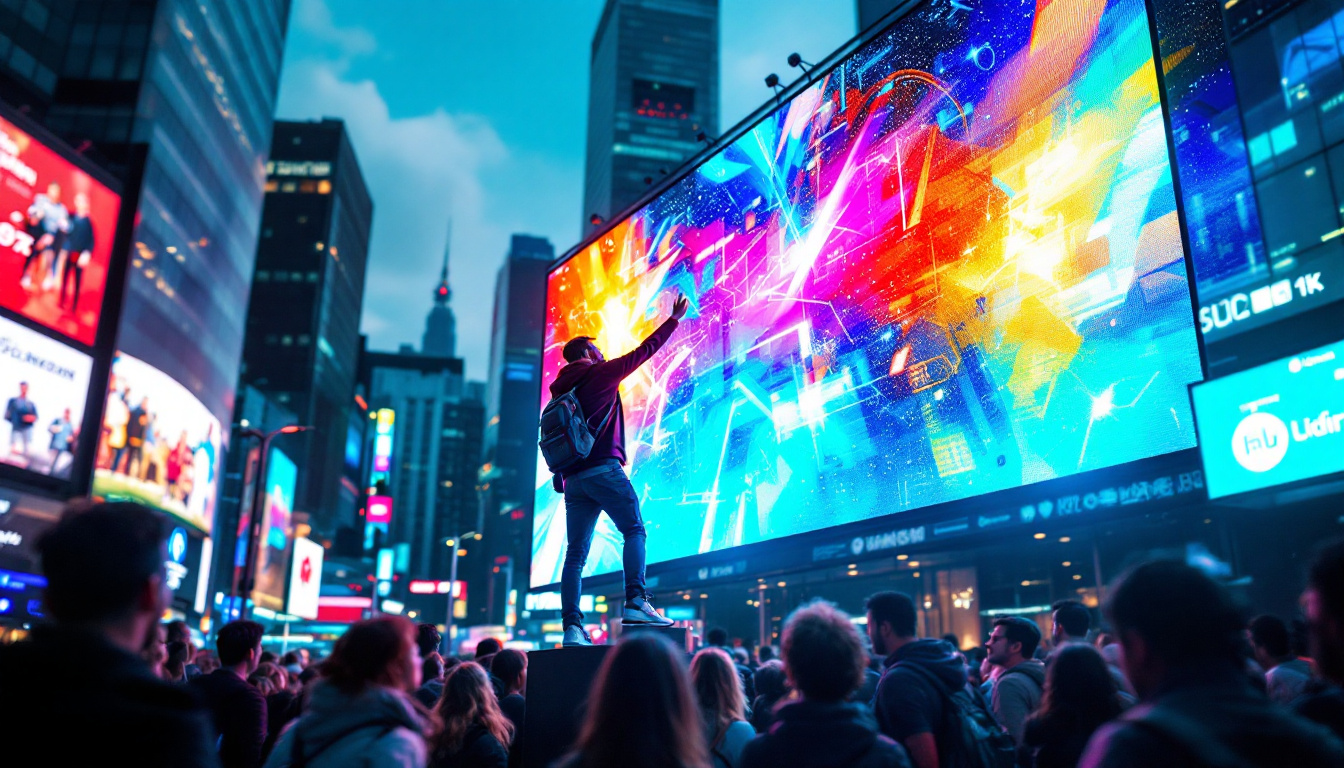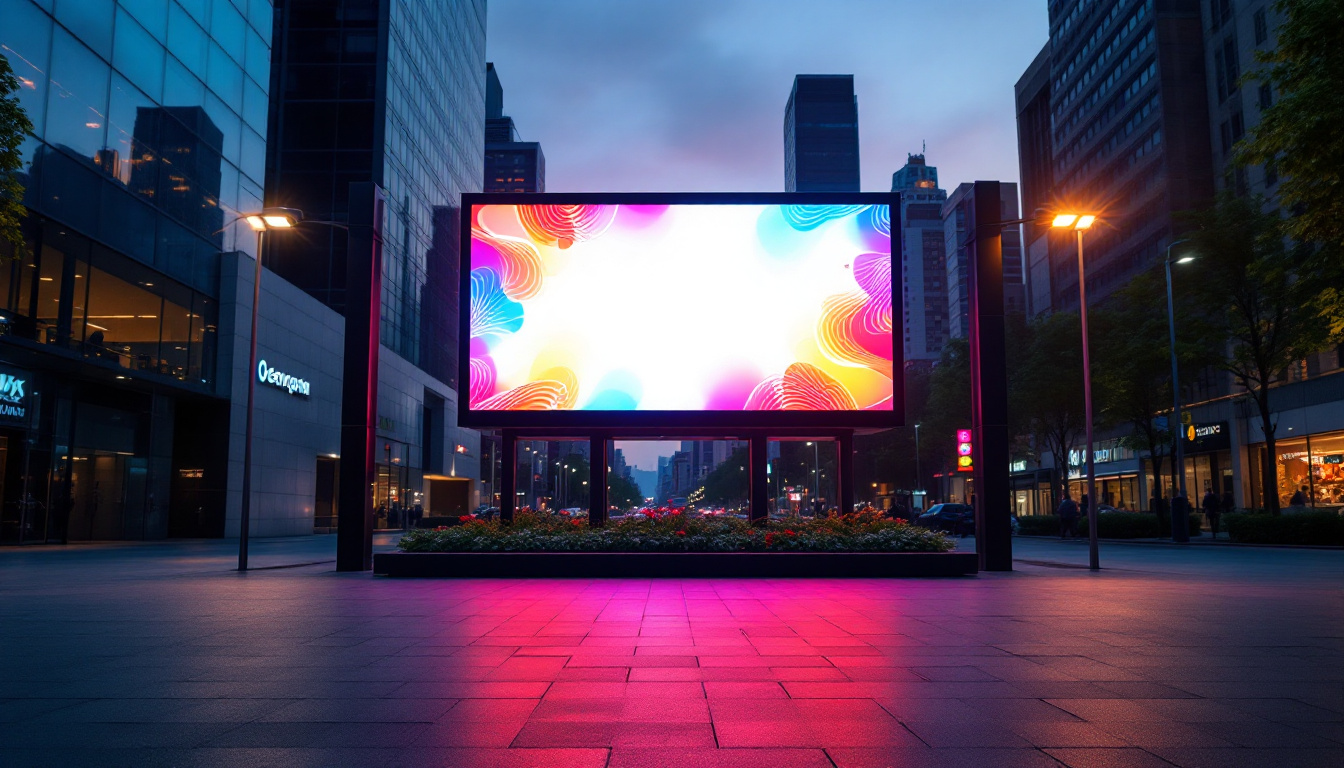In the realm of modern technology, display monitors have become an essential part of both personal and professional environments. Among the various types of displays available, LED (Light Emitting Diode) technology has gained immense popularity due to its superior performance and energy efficiency. This article delves into the intricacies of LED displays, exploring their functionality, advantages, and applications.
Understanding LED Technology
LED technology has revolutionized the way we perceive images on screens. Unlike traditional LCD (Liquid Crystal Display) monitors that rely on backlighting, LED displays utilize an array of tiny light-emitting diodes to produce images. This fundamental difference not only enhances the quality of the images displayed but also contributes to the overall efficiency of the device.
How LED Displays Work
At the core of LED technology is the concept of electroluminescence. When an electric current passes through a semiconductor material, it emits light. In LED displays, this process occurs at a microscopic level, where millions of individual diodes work together to create vibrant images. These diodes can be arranged in various configurations, including RGB (Red, Green, Blue) combinations, which allow for a wide spectrum of colors.
There are two primary types of LED displays: edge-lit and backlit. Edge-lit displays have LEDs positioned along the edges of the screen, while backlit displays feature a grid of LEDs positioned directly behind the screen. Both methods have their advantages, with backlit displays typically offering better color accuracy and brightness.
The Role of Color and Brightness
Color reproduction is one of the standout features of LED displays. The ability to produce a broad range of colors is crucial for applications such as graphic design, video editing, and gaming. LED technology allows for precise control over color saturation and brightness, resulting in images that are not only vivid but also true to life.
Brightness levels are measured in nits, and LED displays can achieve significantly higher brightness levels than traditional displays. This capability makes them suitable for various environments, including well-lit offices and outdoor settings, where visibility can be a challenge.
Advantages of LED Displays
The popularity of LED displays can be attributed to a myriad of advantages they offer over conventional display technologies. These benefits extend beyond just visual performance, impacting energy consumption, longevity, and overall user experience.
Energy Efficiency
One of the most significant advantages of LED displays is their energy efficiency. Compared to traditional LCDs and CRTs (Cathode Ray Tubes), LED monitors consume considerably less power. This reduced energy consumption not only lowers electricity bills but also contributes to a smaller carbon footprint, making LED displays a more environmentally friendly option.
In addition, many LED displays come equipped with features such as automatic brightness adjustment, which further optimizes energy usage based on ambient light conditions. This intelligent design ensures that users can enjoy high-quality visuals without unnecessary energy expenditure.
Longevity and Durability
LED displays are known for their durability and long lifespan. While traditional displays may suffer from issues such as screen burn-in or color fading over time, LED technology is inherently more resilient. Most LED monitors can last up to 50,000 hours or more, making them a cost-effective investment in the long run.
Furthermore, LED displays are less prone to physical damage due to their solid-state construction. This robustness makes them ideal for various applications, from home entertainment systems to industrial settings where durability is paramount.
Enhanced Visual Experience
The visual experience offered by LED displays is unparalleled. With higher contrast ratios and faster response times, these monitors provide smoother motion and sharper images. This is particularly beneficial for gamers and video enthusiasts who demand high-quality visuals.
Additionally, many LED displays support advanced technologies such as HDR (High Dynamic Range), which enhances the range of colors and brightness levels, resulting in a more immersive viewing experience. Whether for gaming, watching movies, or professional work, LED displays cater to a wide range of visual needs.
Applications of LED Displays
LED displays have found their way into numerous applications across various industries. Their versatility and performance make them suitable for everything from consumer electronics to large-scale advertising. Below are some notable applications of LED technology.
Consumer Electronics
In the consumer electronics sector, LED displays are ubiquitous. From televisions and computer monitors to smartphones and tablets, LED technology is the standard for high-quality visual output. The demand for larger screens with better resolution has propelled the development of LED technology, leading to innovations such as ultra-thin displays and curved screens.
Moreover, the integration of smart technology into LED displays has transformed the way users interact with their devices. Features such as touch sensitivity and voice control have become commonplace, enhancing the overall user experience.
Advertising and Digital Signage
LED displays have become a cornerstone of modern advertising and digital signage. Their ability to deliver bright, eye-catching visuals makes them ideal for billboards, storefronts, and public displays. Businesses leverage LED technology to create dynamic advertisements that capture the attention of passersby, ultimately driving customer engagement.
With advancements in technology, LED displays can now be programmed to change content in real-time, allowing for targeted advertising based on time of day, audience demographics, and other factors. This flexibility provides businesses with a powerful tool to enhance their marketing strategies.
Professional and Industrial Use
In professional settings, LED displays are utilized for presentations, video conferencing, and collaborative work. Their clarity and color accuracy make them ideal for tasks that require precise visual representation, such as graphic design and data analysis.
Industrially, LED displays are employed in control rooms, monitoring stations, and manufacturing environments. Their durability and reliability make them suitable for demanding applications where performance is critical. Additionally, LED technology is increasingly being used in medical imaging and diagnostics, further showcasing its versatility.
Choosing the Right LED Display
With a plethora of options available in the market, selecting the right LED display can be a daunting task. Several factors should be considered to ensure that the chosen display meets the specific needs of the user.
Screen Size and Resolution
Screen size and resolution are among the most critical factors when choosing an LED display. Larger screens with higher resolutions provide a more immersive experience, especially for gaming and multimedia. Common resolutions include Full HD (1920×1080), 4K (3840×2160), and even 8K (7680×4320) for those seeking the highest quality visuals.
It is essential to assess the viewing distance when determining the appropriate screen size. A larger screen may be suitable for a spacious room, while a smaller display may be more appropriate for a desk setup.
Refresh Rate and Response Time
The refresh rate and response time of an LED display are vital for ensuring smooth motion and reducing lag. A higher refresh rate, measured in hertz (Hz), indicates how many times the screen refreshes per second. For gaming and fast-paced video content, a refresh rate of at least 60Hz is recommended, with many high-end monitors offering rates of 120Hz or more.
Response time, measured in milliseconds (ms), refers to how quickly a pixel can change from one color to another. Lower response times are preferable for reducing motion blur and ghosting effects, enhancing the overall viewing experience.
Connectivity Options
Modern LED displays come equipped with various connectivity options, including HDMI, DisplayPort, USB-C, and more. It is essential to ensure that the chosen display is compatible with the devices it will be connected to, whether it be a computer, gaming console, or media player.
Additionally, features such as built-in speakers, USB hubs, and adjustable stands can enhance usability and convenience, making it easier to integrate the display into an existing setup.
Future Trends in LED Display Technology
The LED display industry is continuously evolving, with new technologies and innovations emerging at a rapid pace. As consumer demands change and technology advances, several trends are shaping the future of LED displays.
MicroLED Technology
MicroLED technology represents the next frontier in display innovation. Unlike traditional LED displays, which use larger diodes, MicroLED utilizes tiny, microscopic LEDs that can be individually controlled. This allows for even greater color accuracy, contrast, and brightness levels, as well as the potential for flexible and modular display designs.
MicroLED displays also promise to eliminate issues such as burn-in and color degradation, making them a compelling option for both consumer and professional applications. As this technology matures, it is expected to become more accessible and affordable, further revolutionizing the display landscape.
Increased Focus on Sustainability
As environmental concerns continue to rise, the display industry is placing a greater emphasis on sustainability. Manufacturers are exploring eco-friendly materials and production methods to reduce waste and energy consumption. Additionally, efforts are being made to enhance the recyclability of display components, ensuring that LED displays have a minimal environmental impact throughout their lifecycle.
Consumers are becoming more conscious of the products they purchase, and the demand for sustainable technology is likely to influence future innovations in LED displays.
Integration of AI and Smart Features
The integration of artificial intelligence (AI) into LED displays is set to enhance user experience further. Smart features, such as adaptive brightness, content recognition, and personalized settings, are becoming more prevalent. These advancements aim to create displays that not only provide high-quality visuals but also adapt to the user’s preferences and environment.
As technology continues to advance, the potential for AI-driven displays is vast, paving the way for more intuitive and engaging interactions between users and their screens.
Conclusion
LED displays have transformed the way we interact with technology, offering superior performance, energy efficiency, and versatility across various applications. As advancements in technology continue to shape the industry, the future of LED displays looks promising, with innovations such as MicroLED, sustainability initiatives, and AI integration on the horizon.
Whether for personal use, professional applications, or advertising, LED displays are poised to remain at the forefront of display technology, providing users with an unparalleled visual experience. Understanding the intricacies of LED technology and its advantages can empower consumers and businesses alike to make informed decisions when selecting their next display monitor.
Explore Cutting-Edge LED Displays with LumenMatrix
Ready to elevate your visual experience with the latest in LED display technology? Look no further than LumenMatrix, a pioneer in crafting innovative LED display modules designed to amplify your brand’s presence and captivate your audience. From Indoor and Outdoor LED Wall Displays to specialized solutions like Vehicle LED Displays, LED Sports Displays, and even Custom LED Displays, LumenMatrix offers a comprehensive range of products to meet your unique needs. Embrace the future of visual communication and check out LumenMatrix LED Display Solutions today to see how our state-of-the-art displays can transform your message into an unforgettable visual journey.


